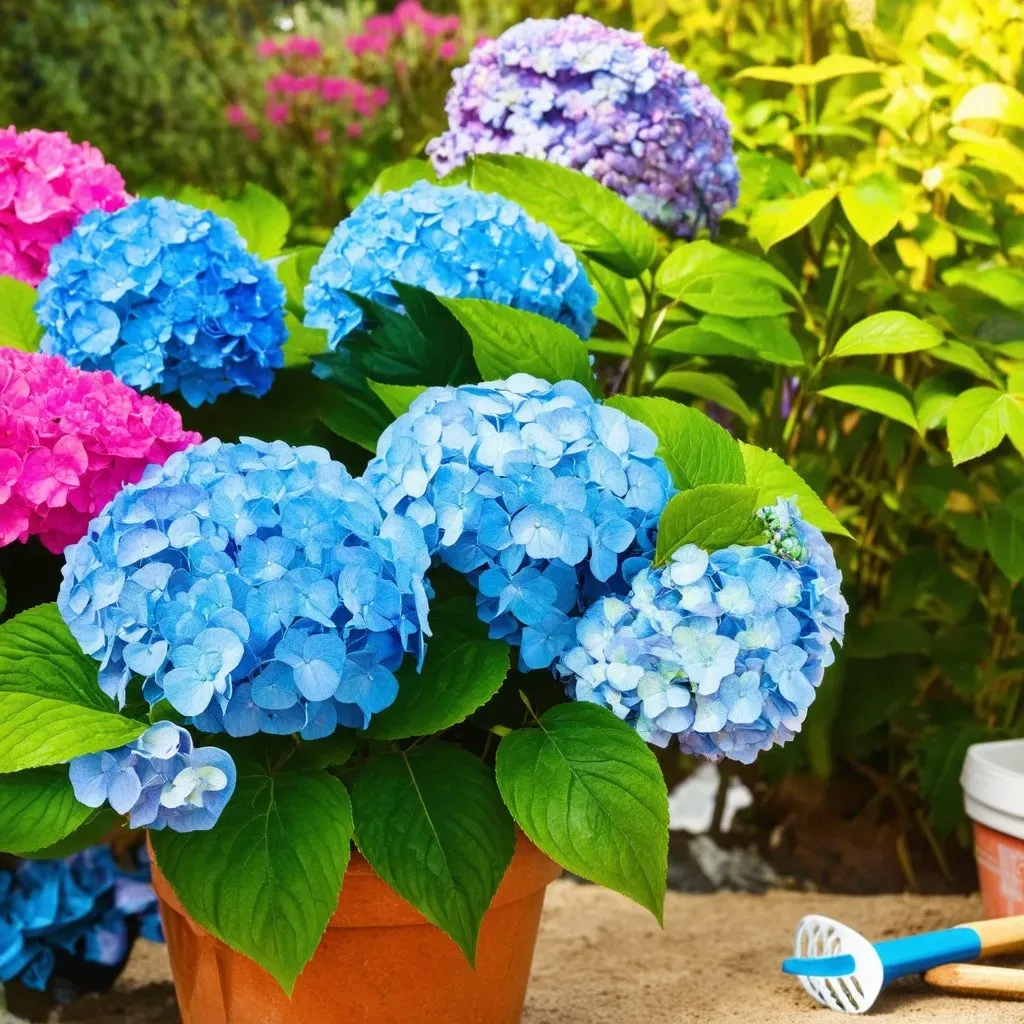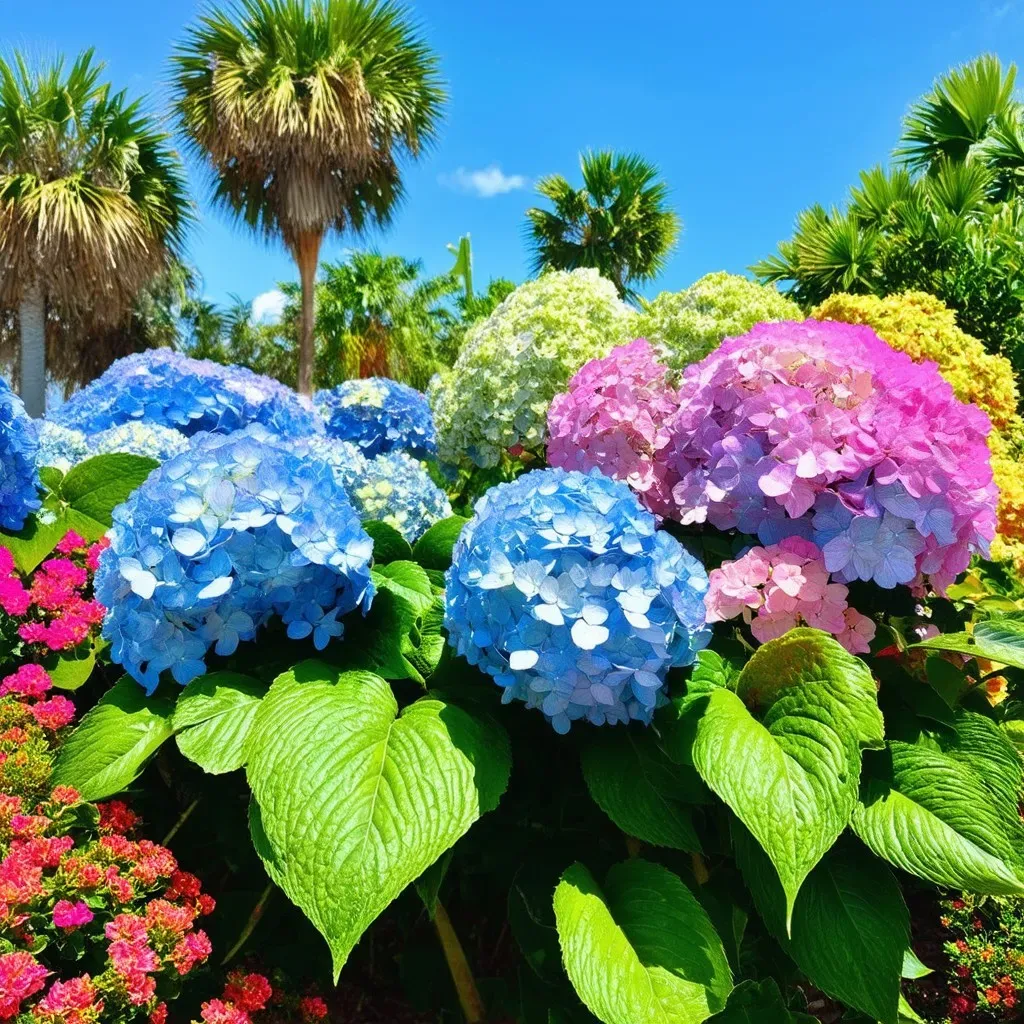When is the best time to plant hydrangeas in Florida? The optimal time to plant hydrangeas in Florida is during the cooler months of late fall or early winter. This timing allows the plants to establish strong roots before the oppressive heat of summer arrives, ensuring they are well-prepared for the growing season.
Understanding Florida’s Climate for Hydrangeas
Florida’s climate presents unique opportunities and challenges for gardening, particularly when it comes to planting hydrangeas. With its generally warm temperatures and sandy soil, understanding the best planting time is crucial for hydrangea success.
Hydrangea Growing Seasons in Florida
| Season | Temperature Average | Notes |
|---|---|---|
| Summer | 80-95°F | Hot and humid; stress on plants; ensure adequate watering |
| Fall | 60-80°F | Ideal for planting; temperatures are cooler, aiding root establishment |
| Winter | 50-70°F | Mild winters; good for planting in zones that don’t freeze |
| Spring | 60-85°F | Occasionally too warm; planting is still viable if cold weather is avoided |
Optimal Planting Months
- Late Fall: October to December
- Early Winter: January to February
These cooler months are recommended because they allow hydrangeas to settle in before the rising temperatures of spring.
Preparing for Planting Hydrangeas
Before planting, prepare the necessary items and conditions for the best results. Below is a checklist to ensure proper planting.
- Soil Amendments: Hydrangeas prefer well-draining soil. In Florida’s sandy soil, mix organic matter such as compost to improve nutrient availability.
- Mulching: Apply a 2-3 inch layer of mulch around plants. This helps retain moisture and keep soil temperatures consistent.
- Watering: Ensure consistent watering for at least the initial few weeks after planting. Hydrangeas need moisture, especially in the summer months.
Best Practices for Planting
- Choose the Right Location: Aim for a site that receives partial shade since direct sunlight can harm the plants, especially in the afternoon.
- Digging the Hole: The hole should be at least twice as wide and the same depth as the hydrangea’s root ball.
- Positioning: Set the top of the root ball slightly above ground level to facilitate drainage, preventing root rot.
Hydrangea Varieties for Florida
Not all hydrangeas are suitable for Florida’s climate. Here’s a table of varieties that thrive in the Sunshine State:
| Hydrangea Variety | Color Range | Growth Conditions |
|---|---|---|
| Smooth Hydrangea | White, blue, pink | Tolerates heat and humidity |
| Panicle Hydrangea | White, cream | Needs full sun to partial shade |
| Bigleaf Hydrangea | Blue, pink, purple | Requires more moisture |
| Oakleaf Hydrangea | White, red, brown | Adapts to Alabama-like conditions |
| Climbing Hydrangea | White | Versatile; can cover fences or walls |
Hydrangeas are sensitive to soil pH, which can influence their color, particularly for Bigleaf and Oakleaf types. Soil amendments can also aid in achieving the desired color.
Hydrangea Care Guide for Central Florida
- Watering: Regular watering is vital, especially in dry summer months. Use the finger test – stick your finger in the soil. If it feels dry at 1 inch deep, it’s time to water.
- Fertilizing: Prior to the growing season (March-November), use a balanced fertilizer (10-10-10 or 12-12-12) every Other week to promote healthy growth and blooming. Avoid fertilizing during winter dormancy.
- Pruning: Hydrangeas should be pruned at the right time, usually towards the end of winter or early spring, before new growth starts.
Additional Care Tips
- Sun Protection: Use shade cloths if necessary during peak summer to prevent leaf scorch.
- Pest Management: Keep an eye out for common pests such as aphids and spider mites. Use insecticidal soap or neem oil for treatment.
Growing Hydrangeas in Pots in Florida
For those with limited garden space, growing hydrangeas in pots can be a fantastic solution. Containers allow for better control over soil conditions and can be moved to avoid harsh sunlight.
Steps for Potting Hydrangeas
- Choose the Right Pot: Select a pot at least 18-24 inches in diameter with good drainage holes.
- Soil Choosing: Use a quality potting mix amended with compost for nutrient retention.
- Watering: Potted plants may require more frequent watering, especially during hotter days. Always check soil moisture before watering.
FAQs about Hydrangeas in Florida
Q: What is the ideal soil pH for hydrangeas?
A: Hydrangeas prefer a pH between 5.5 and 6.5. You can amend your soil accordingly if it is too acidic or too alkaline.
Q: Can I plant hydrangeas in full sun?
A: While some varieties can tolerate full sun, it is generally best to plant hydrangeas in partial shade to avoid stress and scorched leaves.
Q: How often should I water newly planted hydrangeas?
A: New plants should be watered deeply once a week, or more frequently in hot conditions, until established.
Q: Do hydrangeas require a lot of maintenance?
A: With the right practices, hydrangeas can be low-maintenance. Areas needing attention include periodic watering, mulching, and occasional pruning.
For more detailed knowledge about hydrangeas in Florida gardening, you can refer to Florida Gardening Guide for expert tips and insights.



This comprehensive Planting Guide arms you with the crucial information needed to successfully grow hydrangeas in Florida. It’s all about understanding the seasonal changes and making informed choices about planting and care. Happy gardening!


